
Bumper stickers aren’t known for being the most trustworthy sources of historical fact, but the one that proclaims that weekends are “brought to you by the labor movement” gets it exactly right. If anything, it doesn’t go far enough.
Indeed, employers and elected leaders did not implement the five-day workweek out of the goodness of their hearts. Rather, workers and their unions agitated lobbied, organized, struck and voted for decades to achieve these gains. As Frederick Douglass, the legendary African American activist, once declared: “Power concedes nothing without a demand. It never did and it never will.”
A complete list of the ways labor changed American history would be immeasurably long—but, for Labor Day, here are three of the top ways unions helped American workers:
Unions help win the 8-hour day
When the industrial revolution commenced in the early 19th century, industrial workers toiled as long as farmers did: from sunup until sundown. Ten-, 12-, and even 14-hour days were common in mills and factories as well as printshops, restaurants and retail stores.
The first, halting efforts by workers to demand a shorter workday began in the 1860s. After a generation of fits and starts, in 1886, a nationwide movement arose that culminated on May 1 when hundreds of thousands of workers stayed away from work to push employers for eight-hour days. These efforts largely failed.
So, too, when union workers of Andrew Carnegie’s monopolistic steel company were defeated in 1892 at “Bloody Homestead” (just outside of Pittsburgh), the steel industry instituted 12-hour days, seven days a week. Every other week, steelworkers were compelled to make the hated “long turn,” a 24-hour shift.
Only in the 1930s did the tide turn for workers. With Franklin D. Roosevelt in the White House, allies in Congress, and the first female cabinet member in Secretary of Labor Frances Perkins, a series of reforms were implemented. In 1938, Congress passed the Fair Labor Standards Act that established the eight-hour day and five-day week for wage-workers. But don’t solely thank the politicians. As FDR once told union and civil-rights leader A. Philip Randolph, he agreed with the labor movement’s ideas, but he needed the activists to “go out and make me do it.”
Get your history fix in one place: sign up for the weekly TIME History newsletter
Unions promote equality
The American working class has always been more ethnically and racially diverse than the middle and upper classes. Just consider who does the most dangerous, dirtiest and lowest-paid work. When the transcontinental railroad lines started being built in the 1860s, guess who laid the track? Chinese contract laborers, Mexican Americans, Irish immigrants and recently emancipated African Americans. Fast forward to the early 20th century, who worked in the nation’s factories and mills? Croats and Jews, Norwegians and Italians—essentially European immigrants and their children. Even today, those who pick the nation’s fruits, grains and vegetables are overwhelmingly immigrants of color.
Workers fought for themselves, but they could not succeed individually. They needed organizational heft. African Americans, Mexican Americans and other minorities formed civil-rights organizations but also joined unions. In the World War I era, Philadelphia dockworkers joined the radical Industrial Workers of the World (IWW), in part because they were one-third African American, one-third Irish and Irish American, and one-third Eastern European immigrant. In that generation, there might not have been a more inclusive organization in all the nation. When the Congress of Industrial Organizations (CIO) formed in 1935, it started organizing millions of African Americans, Mexican Americans, women, “white ethnics” and others traditionally denied inclusion in unions and the middle class.
The United Auto Workers helped bankroll the legendary March on Washington for Jobs and Freedom in 1963. Cesar Chavez and Dolores Huerta—perhaps the most revered Mexican American leaders to this day—led the United Farm Workers of America. Martin Luther King Jr. regularly advised black workers to unionize and was murdered while helping sanitation workers in Memphis win a strike and contract.
It should go without saying that the labor movement, in a nation that has yet to live up to its ideal of equality, also has engaged in racism, sexism and xenophobia. But on the whole, and particularly in recent decades, the diversity of the labor movement has set an example other national organizations could learn from— and has taken steps to make sure workers are protected regardless of race, sex, sexuality, religion, nationality or legal status.
Unions fight for safer workplaces
Once upon a time, millions of children toiled long hours in factories, mills and mines. Once upon a time, miners and other industrial workers died by the thousands every year — 23,000 in 1913 alone. Once upon a time, workers in the country’s nuclear power plants were exposed to huge doses of radioactive materials. What changed?
Unions pushed employers and government officials to make workplaces safer.
While progress also came through union contracts, most American workers never have been unionized, so public policy is the key vehicle for labor protections. Across the so-called New Deal era, the 1930s into the 1970s, a succession of laws sought to make American workplaces safer. The Fair Labor Standards Act of 1938 abolished child labor. The Occupational Safety and Health Act and Mining Enforcement and Safety Act, both passed in 1970, resulted in huge improvements to workplace safety. In particular, the Oil, Chemical & Atomic Workers Union, led by Tony Mazzocchi and along with the widely-known activist Karen Silkwood, was a powerful force in the struggle for workplace safety and passage of these landmark laws. In 2017, only 5,147 workers died on the job even though the U.S. population had increased more than threefold in the prior hundred years.
Labor Day Parade, Detroit, 1938
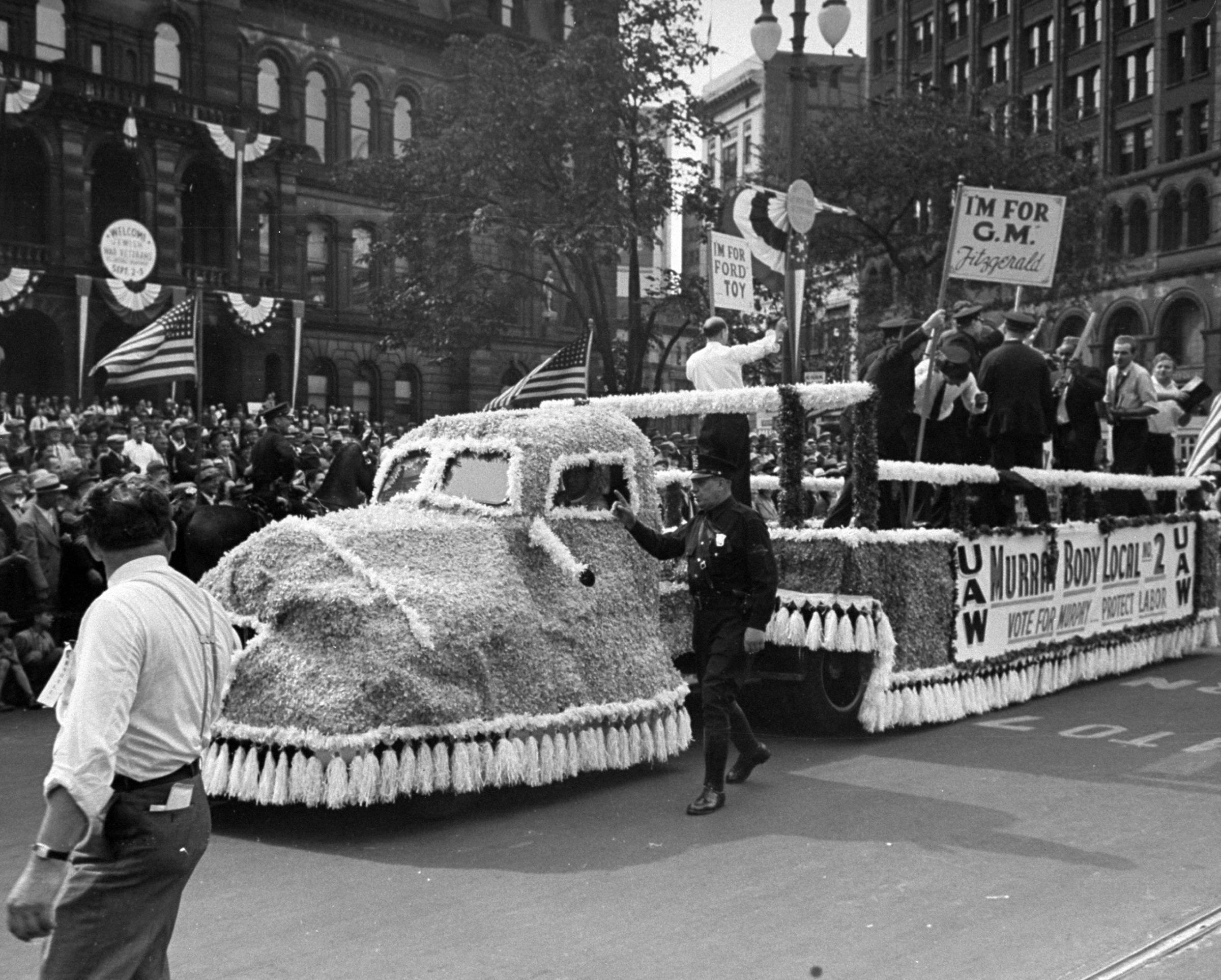
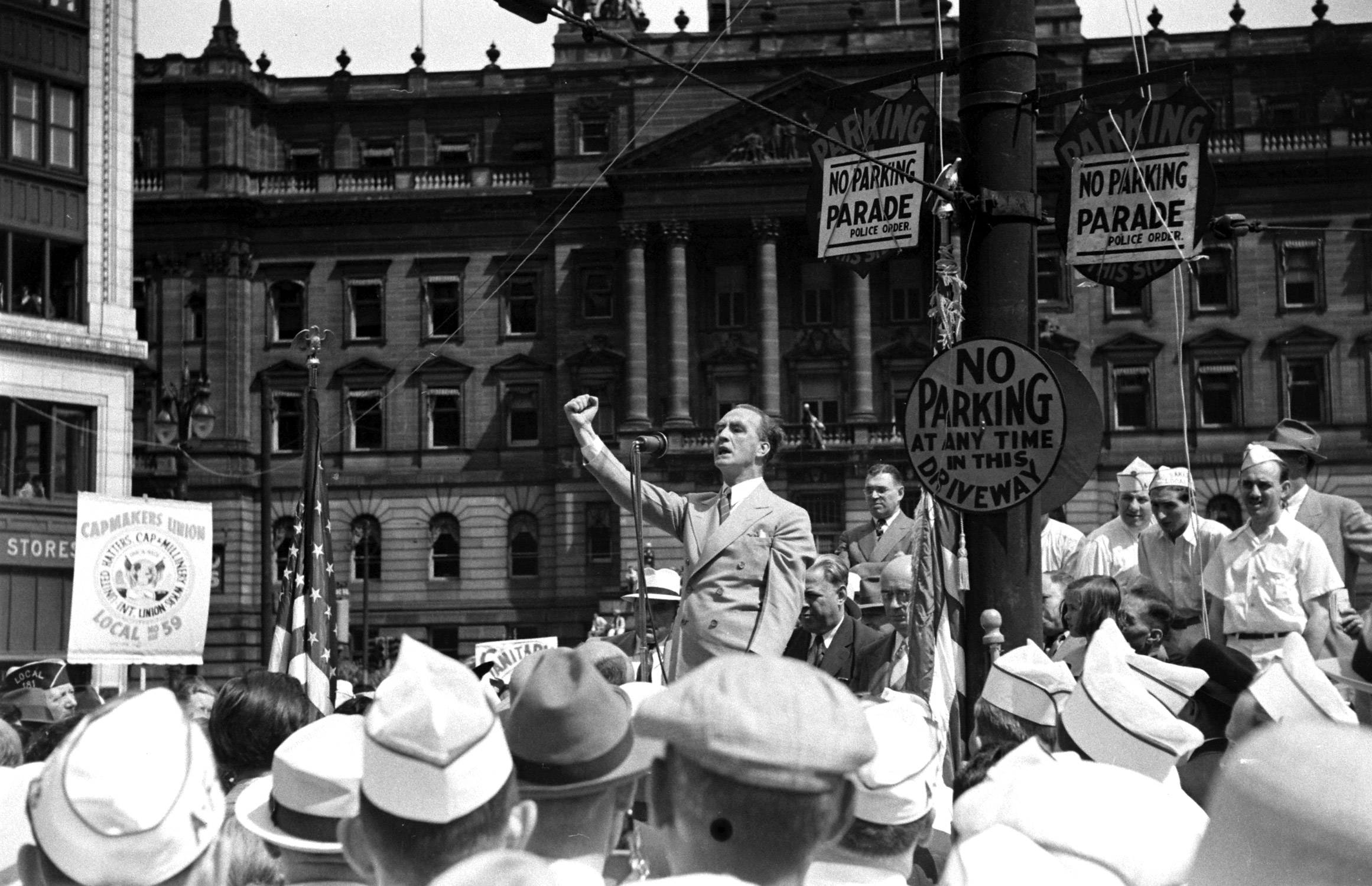

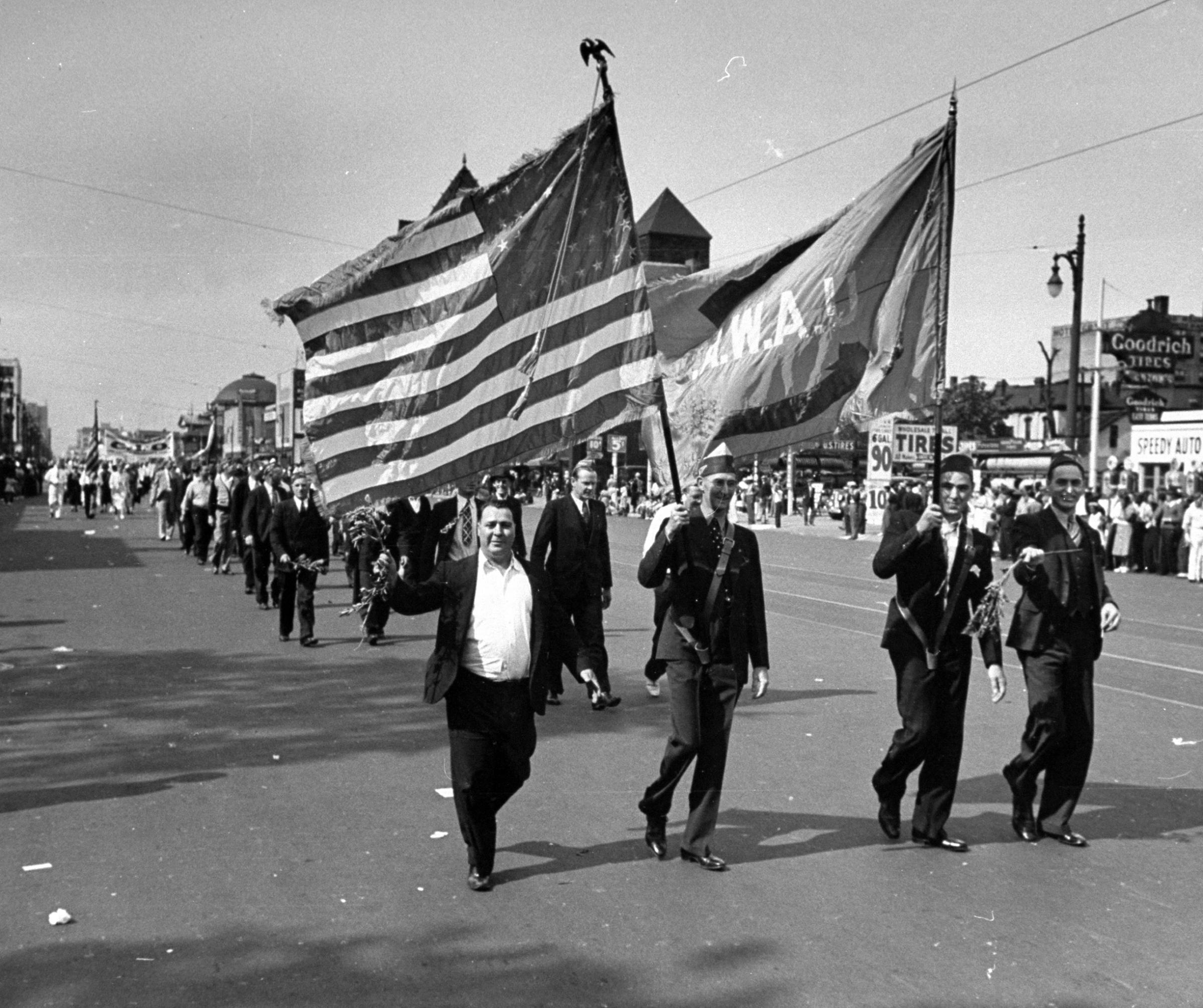
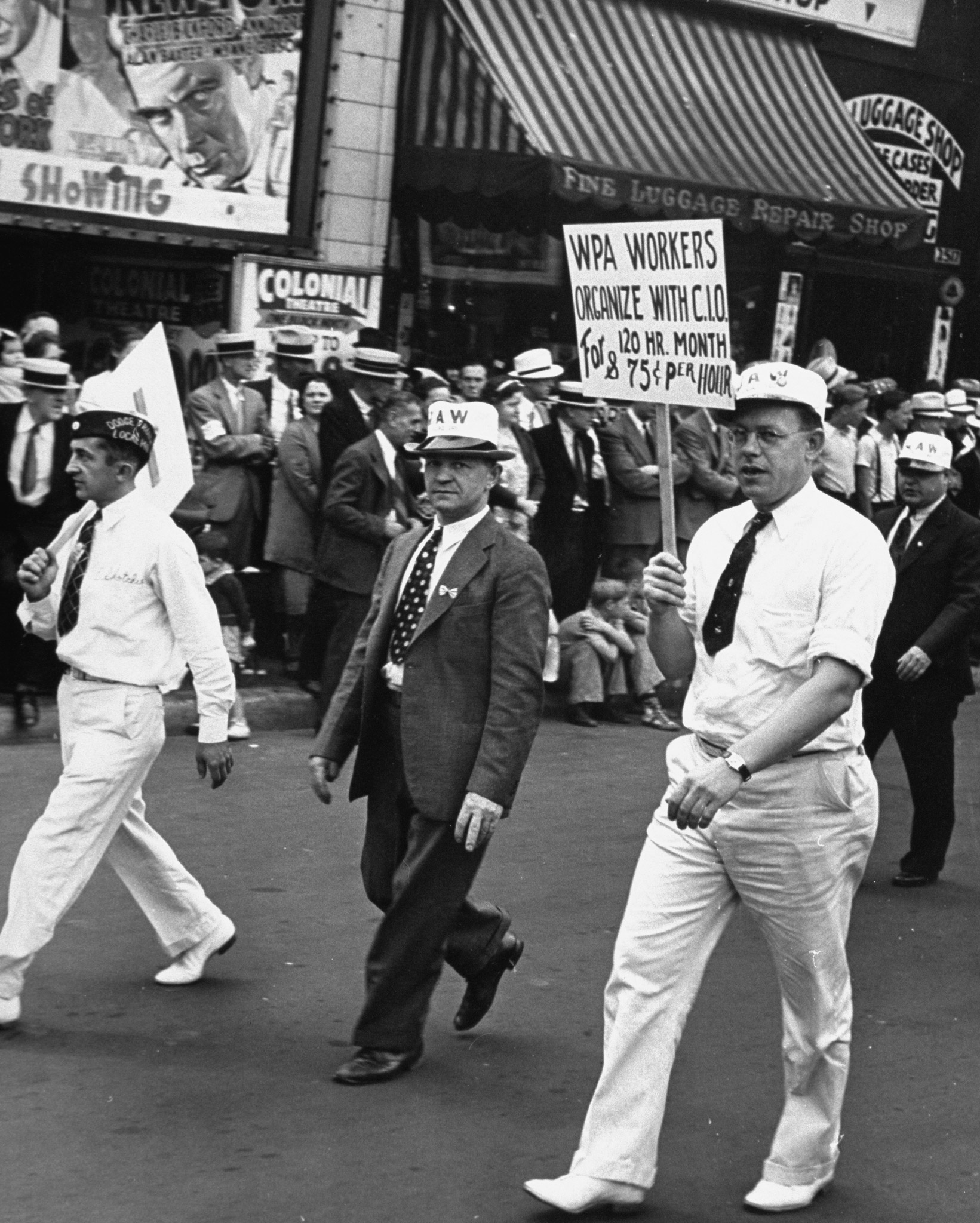



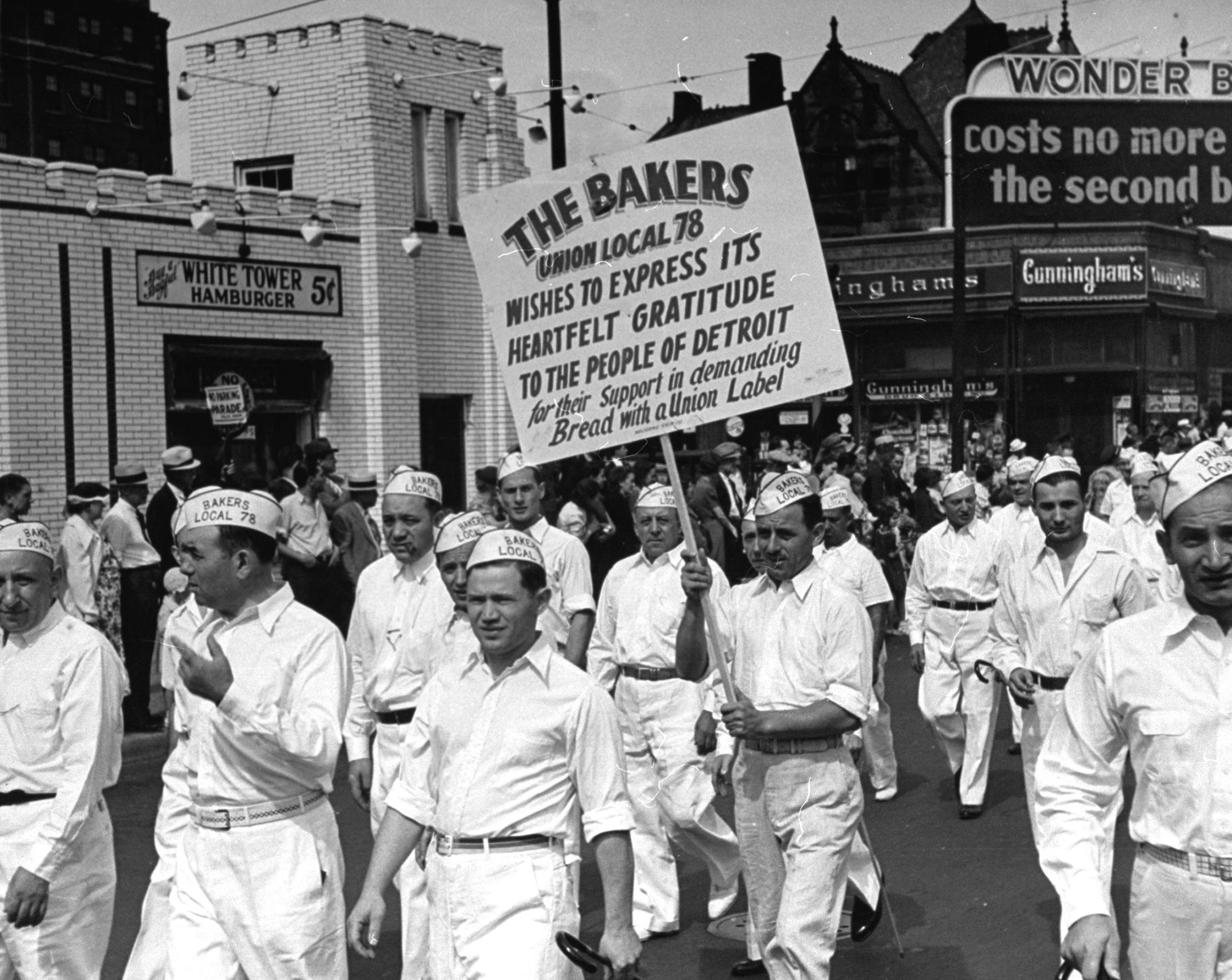
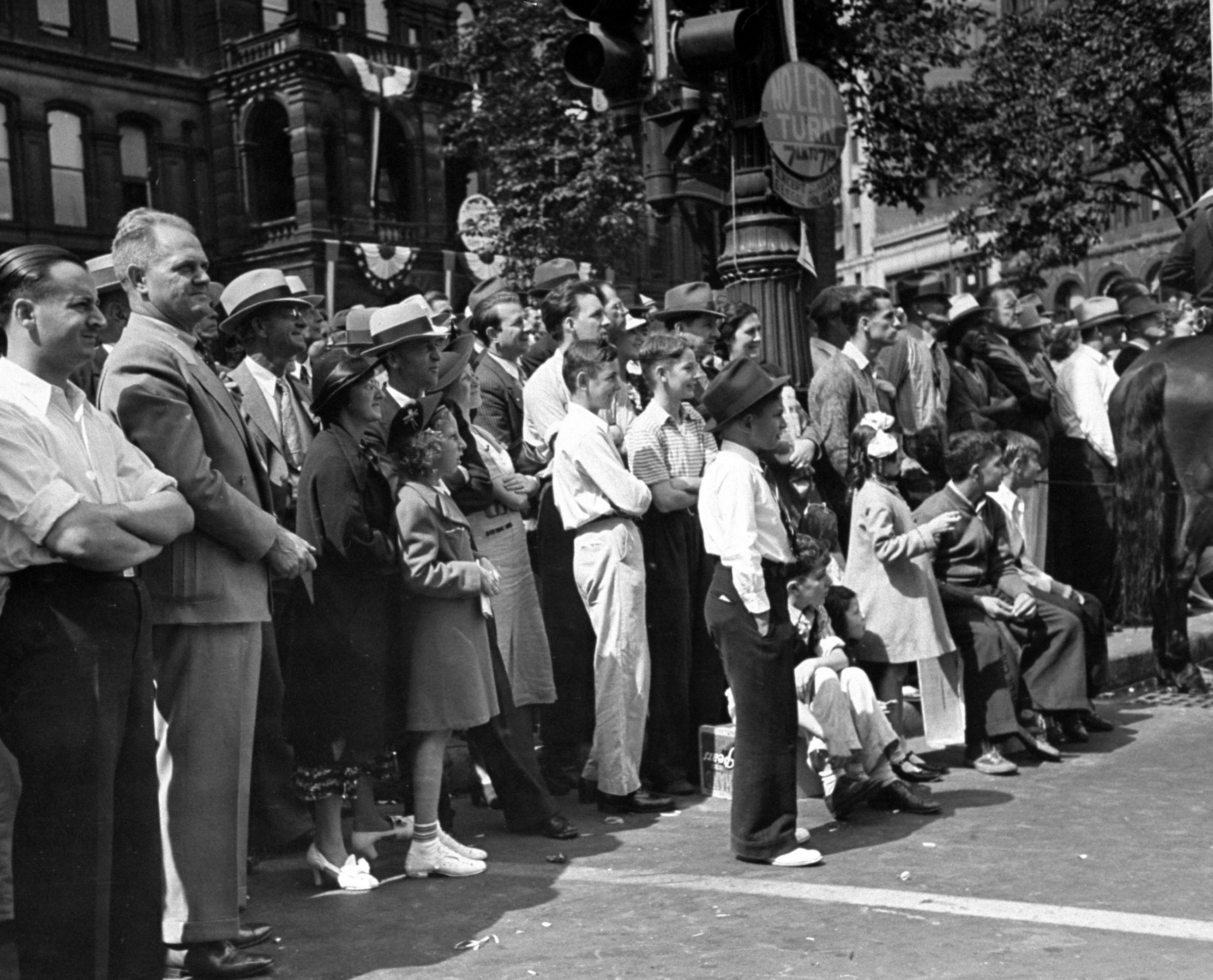
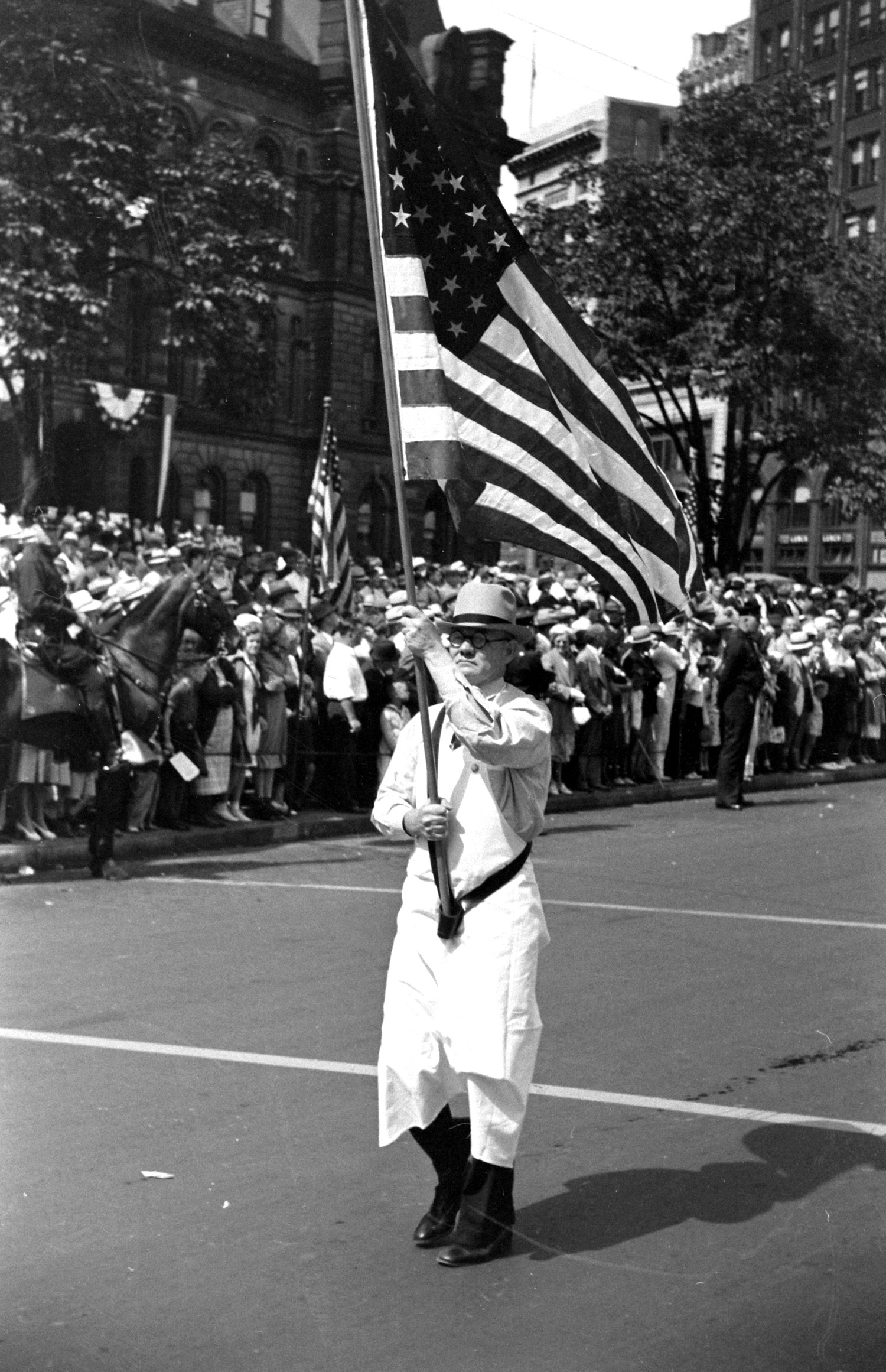
Unions are still working
Despite such tremendous gains, many American workers are overworked and arguably underpaid.
Compared to workers in other industrialized countries, American workers toil far more hours and receive far fewer days off. The World Economic Forum reports that U.S. workers, on average, labor 1,783 hours a year—compared to 1,363 hours for German or 1,470 hours for French workers. According to the American Time Use Survey (ATUS), in 2018 men with full-time jobs labored 8.99 hours a day and women 8.56 hours, though most women also perform several hours a day of unpaid household labor.
Not coincidentally, the reversal of American workers’ gains has happened alongside an enormous decline in unions. Membership peaked around 33% in the mid-1950s and was about 20% in 1983. Starting in the 1980s, what has been a steady decline looks more like jumping off a cliff.
With declining worker power has come a dramatic rise in wealth inequality, now at heights last seen in the 1920s—that is, before the major growth in unions in the 1930s and 1940s.
So, sure, thank a unionist for the fact that children don’t work down in the mines, for the creation of minimum wage and overtime laws, the eight-hour day and the 40-hour week, workplace safety, health insurance, paid vacations and the possibility of a retirement lived in dignity. But also consider the help American workers could still use today.
Historians’ perspectives on how the past informs the present
Peter Cole is a Professor of History at Western Illinois University and a Research Associate at the Society, Work and Development Institute at the University of the Witwatersrand in South Africa. He is the author of Dockworker Power: Race, Technology & Unions in Durban and the San Francisco Bay Area and Wobblies on the Waterfront: Interracial Unionism in Progressive Era Philadelphia.
More Must-Reads from TIME
- Why Biden Dropped Out
- Ukraine’s Plan to Survive Trump
- The Rise of a New Kind of Parenting Guru
- The Chaos and Commotion of the RNC in Photos
- Why We All Have a Stake in Twisters’ Success
- 8 Eating Habits That Actually Improve Your Sleep
- Welcome to the Noah Lyles Olympics
- Get Our Paris Olympics Newsletter in Your Inbox
Contact us at letters@time.com